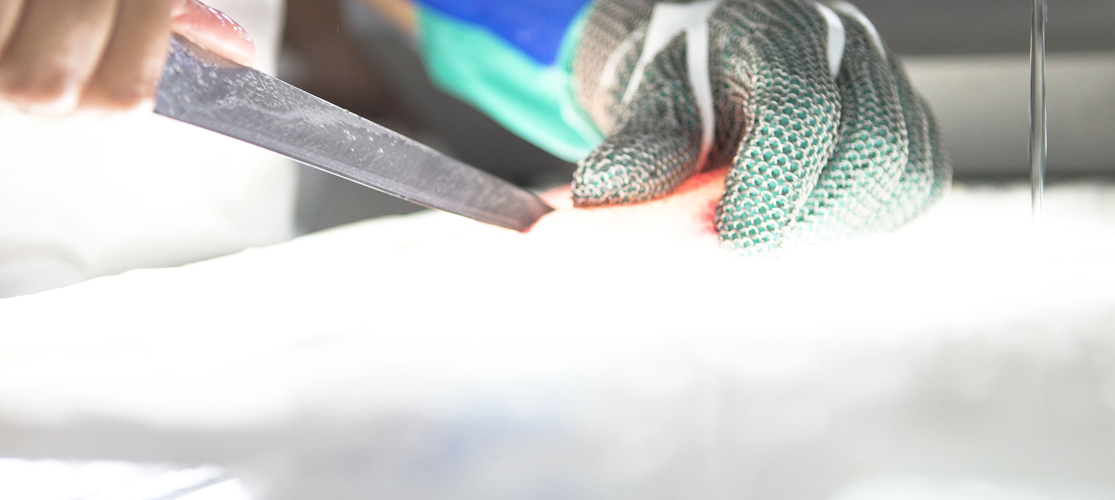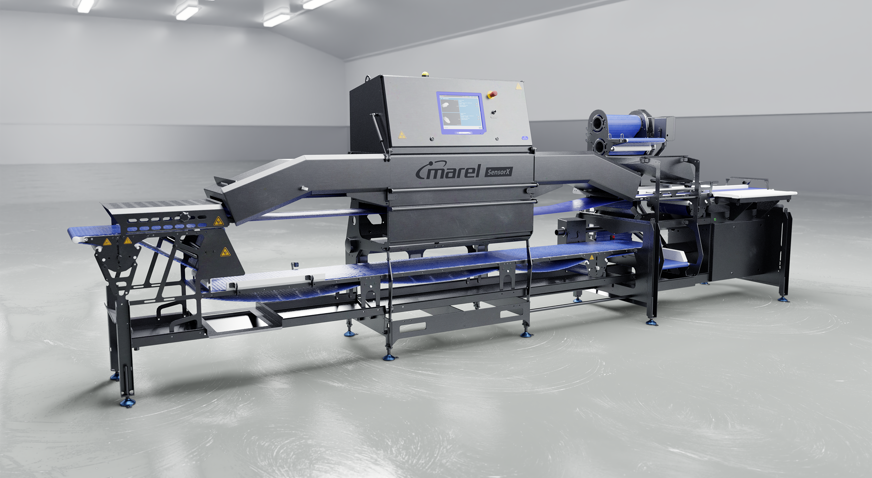Since its release in 2007, the SensorX has become an industry benchmark in improving food safety standards across poultry, meat and fish processing. Marel has continually worked with processors to innovate and develop the system to suit each industry’s requirements in hard contaminate detection. Our latest partnership proved the SensorX is ready to improve food safety in tilapia processing.
SensorX – taking on tilapia bone detection
Meet high standards with boneless tilapia fillets

SensorX individually inspects 100% of fillets and increases food safety for tilapia processors

Taking on tilapia
Tilapia fillets are a high-growth product in Brasil for both the domestic and international markets. While the domestic market standards are more forgiving of bones in end-products, the quality standards that govern the export market are more stringent, requiring a product with zero bones.
Manual bone detection methods have struggled to consistently meet the high export standard of tilapia fillets. As fillets pass through inspection tables, operators must locate seven types of bones, many of which are difficult to detect due to size and density. As shifts progress, finger sensitivity decreases and operators tire, increasing the likelihood of human error.
To assess the effectiveness of the SensorX at detecting bones of various lengths, thicknesses and densities, tilapia fillets were inspected through the SensorX system, then re-inspected by quality control operators. Compared to manual bone detection, the SensorX increased detection success by 30.2% for bones of a minimum of 0.7mm in diameter.
Brazilian processors wanting to take advantage of the fast-growth export markets of the United States and China need to maintain a zero-thorn policy or run the risk of claims for products that do not meet export parameters. By using the SensorX system, tilapia processors will minimize the risk of product being shipped with bones, reducing possible claims from export customers by 30%.

Optimal speed with minimal labor
Marel has had an active application of this technology in use in a Brazilian processesing facility since January 2022. Before introducing the SensorX system, fillets would reach the end of the StreamLine trimming process, move onto the dynamic scale and then onto the manual inspection control point. Six operators were responsible for inspecting fifteen fillets per minute. Errors in detection increased as the shift progressed and operators tired.
The automation offered by the SensorX reduces processing dependency on skilled labor while maintaining the same throughput capacity. Inspection becomes more reliable and streamlined, with fewer operators needed at rework stations to remove fillets rejected by the SensorX system.
More advantages than fewer bones:
Increased automation offers multiple benefits beyond improved bone detection accuracy and processing speeds. By incorporating an array of tasks into one system, including accurate measurement of chemical lean and precise weight capture for weight range grading, the SensorX reduces equipment footprint on production floors.
Integrating the SensorX into a processing line ensures software systems can provide valuable real-time data from the entire production line. With accurate data, processors can achieve greater accuracy, insight and reporting than is possible manually.
For nearly 15 years, Marel’s SensorX technology has been revolutionizing hard contaminant detection in the poultry, meat and fish processing industries. Helping processors keep ahead of increasingly stringent food safety regulations. The success of a recent trial with a Brasilian processor has proven the SensorX can bring its food safety benefits to the tilapia industry.
Get in touch
Our dedicated team is here to help and answer any questions you may have. Please complete the form, and we’ll get back to you as soon as possible. We look forward to hearing from you.